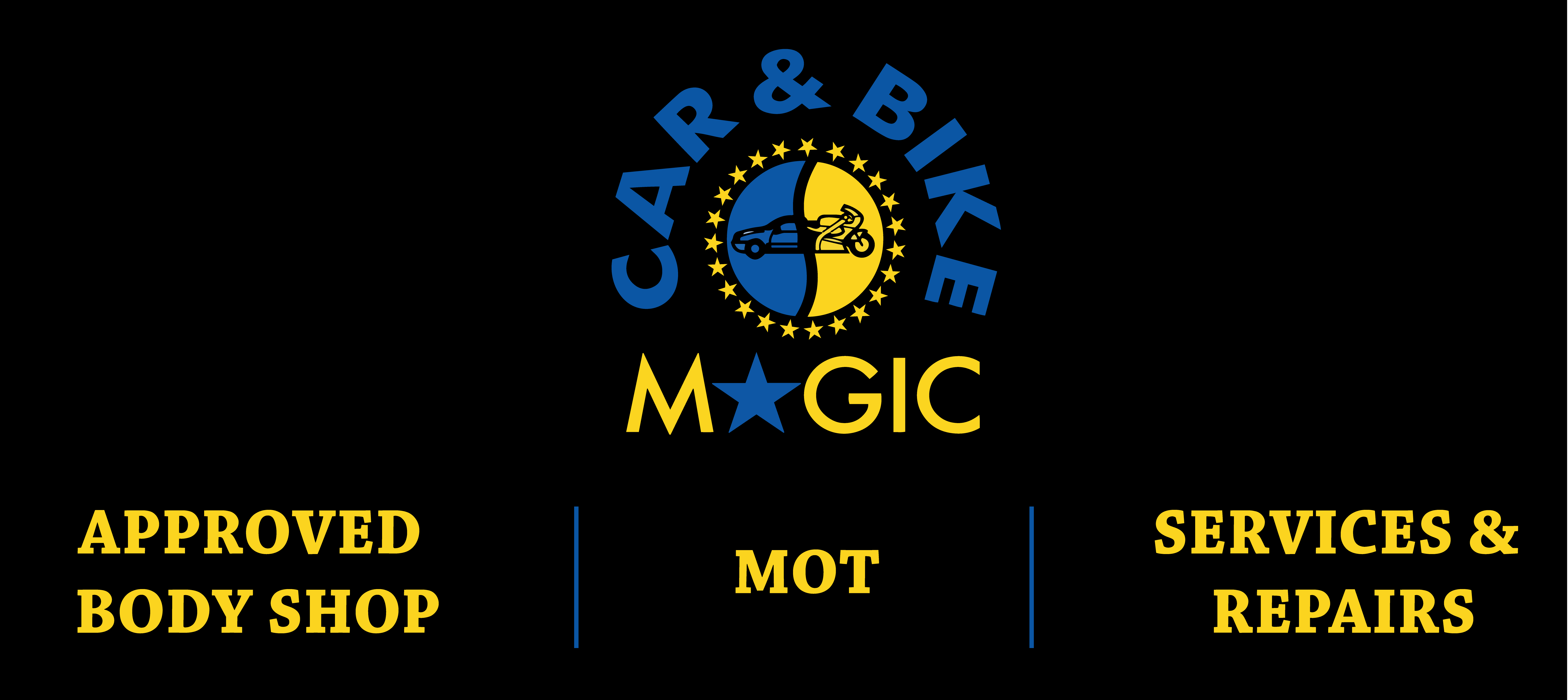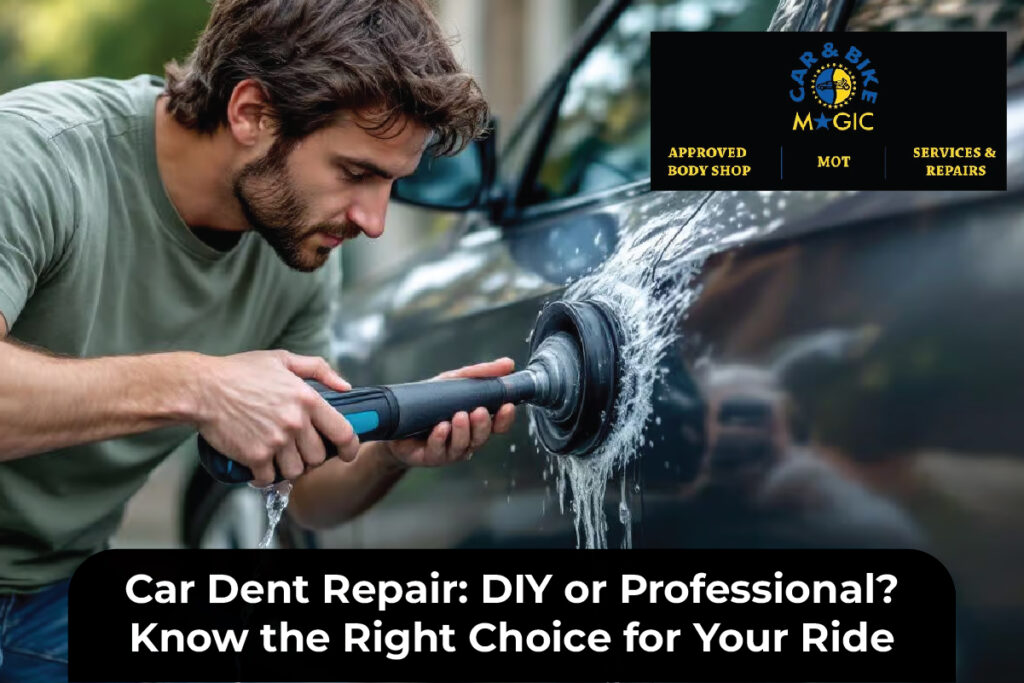A small dent in your car door or bumper can stand out, can’t it? Whether it’s from a rogue shopping cart, a surprise hailstorm, or a not-so-gentle parking neighbor, car dents are more than just cosmetic annoyances—they can affect the resale value of your vehicle and even compromise the paint protection. Many car owners wonder, Should I tackle this myself or call a professional? The answer depends on several factors, and this guide breaks it down so you can make a confident choice.
Let’s explore the world of car dent repair, from paintless dent removal to hail damage repair, and learn when it’s safe to DIY—and when it’s smarter to bring in the pros.
Types of Car Dents You Might Encounter
Car dents come in all shapes and sizes, and understanding what you’re dealing with can help you decide how to fix it. The most common types include:
- Door dings: Small, shallow dents often caused by other car doors or shopping carts.
- Creased dents: These are more complex, with a defined line, and can be trickier to fix.
- Round dents: Usually caused by hail or small balls, they are round and typically shallower.
- Sharp dents: Caused by more direct impacts, these can stretch or damage the paint.
If your dent falls into the first or second category, there’s a good chance paintless dent repair could work.
DIY Car Dent Repair: What Works
Yes, DIY car dent repair can work—if you’re dealing with the right kind of dent. Let’s cover a few effective methods car owners swear by:
- Boiling Water Method: For plastic bumpers, boiling water can soften the area, making it easier to push out the dent.
- Plunger Technique: A regular household plunger (not a flange one) can pop out minor, shallow dents with some pressure.
- Hair Dryer and Compressed Air: Heating the dent with a dryer, followed by a burst of cold from compressed air, can help metal contract and pop the dent out.
While these tricks are cheap and often surprisingly effective, they work best for small, shallow dents where the paint is still intact. Always clean the area first and proceed with caution.
When DIY Isn’t Enough: Signs You Need a Pro
Here’s where it gets tricky. DIY can only take you so far. If you notice any of the following signs, it’s time to call in a professional car dent removal service:
- Paint is cracked or chipped: You’ll need a full paint touch-up or repaint, which is beyond DIY.
- The dent has sharp creases: These require specialized tools and experienced hands.
- The dent affects a panel edge or structural part: Attempting a fix could lead to bigger issues.
- You’ve tried and failed: Sometimes, a bad DIY repair attempt can make professional repair harder—or more expensive.
Pro tip: Look up “paintless dent removal near me” and read customer reviews before picking a shop.
Benefits of Professional Paintless Dent Removal (PDR)
Paintless dent removal, or PDR, is a go-to method for many professional shops. And for good reason:
- No paint needed: If the paint isn’t damaged, this method preserves the original factory finish.
- Cost-effective: PDR tends to be more affordable than traditional bodywork.
- Quick turnaround: Most jobs can be done in hours rather than days.
- Environmentally friendly: No need for paint, fillers, or chemicals.
PDR is perfect for small to medium-sized dents like hail damage repair and door ding removal.
What to Expect from a Professional Dent Repair Shop
Choosing the right dent repair expert makes all the difference. A good shop will:
- Inspect the damage thoroughly
- Give you a fair quote upfront
- Explain the process and timeline clearly
- Offer guarantees or warranties
Don’t hesitate to ask questions and request examples of past work. Transparency is a great indicator of quality service.
Paintless Dent Removal vs. Traditional Dent Repair
Still wondering which method is right for your situation? Let’s compare:
Paintless Dent Repair (PDR):
- Ideal for minor dents with no paint damage
- Faster and cheaper
- Retains original paint and factory finish
Traditional Dent Repair:
- Needed when paint is damaged
- Involves sanding, filling, and repainting
- Longer turnaround and higher cost
Your decision depends on the dent’s severity and the look you want to restore.
Preventing Future Dents: Smart Car Care Tips
Nobody likes repeat visits to the repair shop. Here’s how to keep those panels looking pristine:
- Park far away from other cars whenever possible
- Avoid tight parking spaces near high-traffic areas
- Install garage bumpers or use foam strips to protect walls
- Stay under cover during hail-prone seasons
The more proactive you are, the fewer dents you’ll have to deal with.
Final Thoughts: Know When to DIY and When to Delegate
Car dent repair doesn’t have to be intimidating. If you’ve got a small, paint-intact dent, trying a DIY method can be rewarding—and cost-effective. But for deeper dents, paint damage, or complex repairs, professional help is well worth the investment.
Just remember: a flawless exterior helps maintain your vehicle’s resale value and keeps it looking sharp. Whether you choose DIY or a trusted dent repair shop, your ride will thank you.
FAQs About Car Dent Repair
Q: Is paintless dent repair really effective?
A: Yes, for dents without paint damage. It’s fast, cost-effective, and retains your car’s original finish.
Q: Can I fix a dent myself without damaging the car?
A: You can if it’s small and shallow, but bigger dents or ones near edges should be left to the pros.
Q: How long does a dent repair take?
A: DIY can take under an hour. Professional PDR typically takes a few hours, depending on the dent’s severity.
Q: What does car dent removal cost on average?
A: It ranges from $75 to $500+, depending on dent size and method used.
Q: Will insurance cover dent repair?
A: Sometimes—especially for hail damage or minor collision claims. Check your policy or ask your provider.

